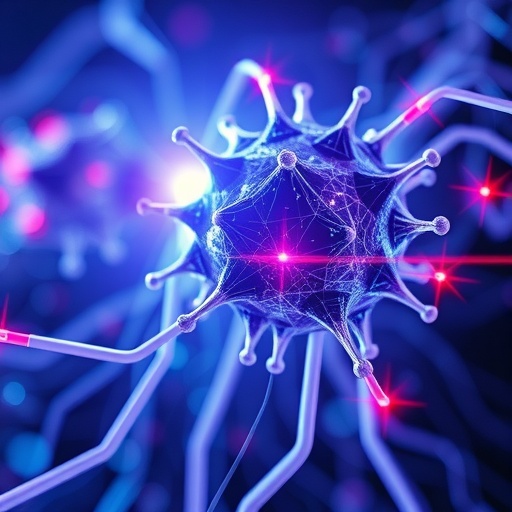
In the intricate web of human cognition, the mechanisms of memory have long fascinated scientists, philosophers, and artificial intelligence researchers. At the core of this vast landscape of understanding is associative memory, a function illustrating how stimuli can trigger recollections of entire experiences or concepts, even when presented with fragments of information. Imagine hearing just the first few notes of an iconic melody; in mere seconds, your mind races to piece together the full composition, demonstrating the remarkable efficiency of human memory. This phenomenon is not just a fluke but represents a fundamental neural process operating within expansive networks of interconnected neurons.
Emerging from the interdisciplinary collaboration between neuroscience and artificial intelligence is the Hopfield network, conceptualized by physicist John Hopfield in 1982. This theoretical paradigm provided a mathematical framework for emulating the brain’s memory storage and retrieval processes. As one of the pioneering recurrent neural network architectures, the Hopfield model excels at reconstructing complete patterns from noisy or incomplete input, akin to how a human brain recognizes familiar melodies. Notably, Hopfield’s groundbreaking contributions were acknowledged with a Nobel Prize in 2024, underscoring the model’s transformative impact.
However, even as the Hopfield network laid the groundwork for understanding neural dynamics, researchers including UC Santa Barbara’s Francesco Bullo and his collaborators argue that this framework has significant limitations, particularly in how it addresses the multifaceted nature of memory retrieval influenced by new experiences. They note that while the model adeptly categorizes the neural processes involved in memory, it fails to adequately encapsulate how external inputs shape and refine these processes. According to the researchers, much remains to be explored in the context of how new information interacts with the retrieval of existing memories.
Bullo articulately distinguishes between conventional machine learning systems and biological memory. He emphasizes that while large language models (LLMs) like those used in modern AI can generate outputs based on prompts, they fundamentally lack the nuanced and dynamic nature of biological memory systems. Unlike a traditional computer algorithm that merely processes inputs into outputs, our experienced memory is deeply rooted in a rich tapestry of associations, emotions, and sensory input that cannot be replicated by algorithms alone. The subtlety of how animals and humans navigate their environments, drawing on past experiences and current stimuli, is far more complex than a mere transactional exchange of data.
The researchers’ exploration into memory retrieval led them to develop the Input-Driven Plasticity (IDP) model, an innovative approach designed to represent these cognitive processes with greater accuracy. The IDP model posits that as external stimuli are perceived, they actively reshape the energy landscape within the brain, guiding the retrieval of memories. This dynamic interaction illustrates a significant shift away from the comparatively static frameworks like the traditional Hopfield model, promoting a continuous, adaptive understanding of memory retrieval.
Consider the real-world example of seeing a cat’s tail without the full view of the animal. The classic Hopfield network suggests that this minimal stimulus allows for the identification of the cat through associative memory. However, the IDP model further contextualizes this behavior by proposing that the initial viewing of the tail not only positions the memory but also alters the surrounding neural landscape, thus enhancing the ease of retrieval. Rather than relying solely on the initial fragment, the integration of ongoing stimuli results in a more accurate and holistic understanding of the memory in question.
Moreover, the IDP model shows resilience against noise and ambiguity inherent in everyday stimuli. Where traditional models might falter amidst unclear inputs, this innovative approach harnesses noise to sift through competing memories, promoting stability in the retrieval process. By recognizing that the mind operates within a state of continuous flux—where gaze and attention shift dynamically—the researchers highlight how memory retrieval is far more than a linear, binary process.
The implications of this research reach beyond cognitive science and into the realm of machine learning. The construction of LLMs like ChatGPT involves attention mechanisms akin to those posited in the IDP model. While the connections between associative memory systems and large language models may not be the primary focus of the researchers’ findings, their discussions illuminate potential pathways for harmonizing these two domains. As they envision further research within this interdisciplinary landscape, the aspiring goal of creating more intelligent, nuanced AI systems becomes more tangible.
The IDP model’s potential benefits to machine learning could lead to machines that not only simulate memory but do so in a continuous and adaptive manner, mirroring the complexities of human cognition. As scientists continue to probe the depths of memory and perception, the exploration of associative dynamics will undoubtedly yield rich insights that can bridge the understanding of biological and artificial intelligence.
In conclusion, the evolution of memory models beckons a deeper inquiry into how we interpret experiences and recall information. As researchers like Bullo and his team articulate, the interplay between sensory stimuli and memory retrieval is a multifaceted landscape that traditional models have only begun to illuminate. The path ahead invites curiosity and innovation, promising advances that could refine our understanding of memory systems, paving the way for breakthroughs in both neuroscience and artificial intelligence.
Subject of Research: Memory Retrieval Mechanisms in Hopfield Networks
Article Title: Input-Driven Dynamics for Robust Memory Retrieval in Hopfield Networks
News Publication Date: 23-Apr-2025
Web References: Science Advances DOI:10.1126/sciadv.adu6991
References: Science Advances
Image Credits: N/A
Keywords
Applied sciences and engineering, Computer science, Artificial intelligence, Artificial neural networks
Tags: associative memory in AIcognitive mechanisms in computingefficiency of human cognitionHopfield network memory retrievalinterdisciplinary collaboration in neurocomputingmathematical frameworks for memoryneural networks energy efficiencyneuroscience and artificial intelligenceNobel Prize in neurosciencereconstructing patterns in AIrecurrent neural network architecturestransformative impact of neural models





